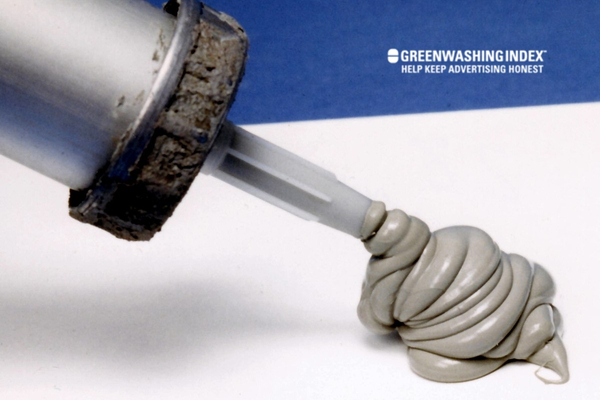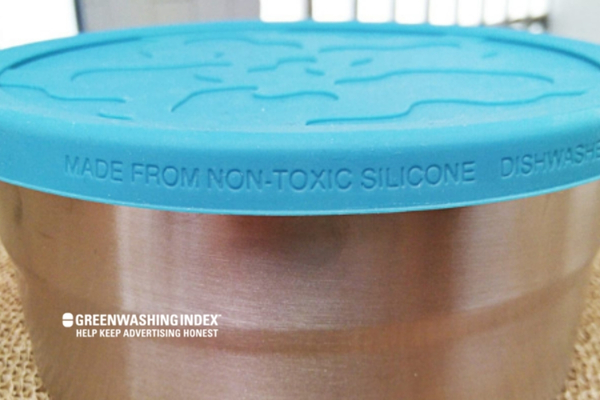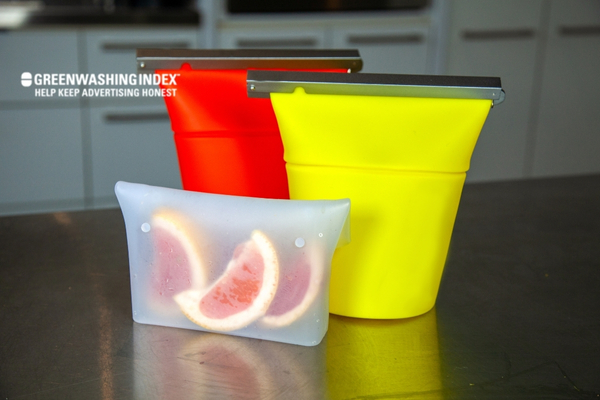

Ever wondered if the silicone in your kitchen spatula, your wristwatch band, or even your phone case is truly kind to Mother Earth? You’re not alone in this quest for a greener lifestyle. Silicone biodegradability has been a hot topic – but separating fact from myth isn’t always as straightforward as we’d like.
Is it actually an eco-warrior in disguise, or are we wrapping our lives in something that’s quietly contributing to our planet’s woes? Stay with me; it’s time to uncover the truth about one of the most common materials in your daily life.
Silicone, that stretchy and heat-resistant material, seems perfect for all sorts of products. Yet, does this mean it takes a graceful bow after its performance and leaves without an environmental trace?
The truth is more complex: silicone is not biodegradable. Silicone consists of a backbone made of silicon and oxygen – elements abundant on Earth – yet they’re bound together so tightly that nature can’t easily break them down. So, while silicone might be durable and less risky than plastics, which are known to leak harmful chemicals over time, its journey toward complete breakdown is slow-moving compared to truly eco-friendly materials.
When we talk about silicone, it’s easy to get mixed up and think of it as just a fancy name for plastic or rubber. However, silicone stands on its own with unique features. To get to the bottom of it, let’s look closely at what silicone really is.

Silicone is kind of like a hybrid between synthetic rubbers and hard plastics. It’s made from a mix of silicon (a natural element you find in sand), oxygen, carbon, and hydrogen. Think of it as a big family of chemicals all linked together in a chain-like pattern.
What makes people often mistake silicone for being biodegradable is how tough and long-lasting it can be. You see items like cooking tools, sealants for your bath, or even phone cases made from silicone because they don’t melt easily and they can stretch without breaking.
But durability doesn’t always mean something can break down back into nature quickly. Silicone isn’t like some other materials that have tiny organisms that eat them up over time (biodegradation). Instead, silicones hang around for much longer before they start to break down — if at all under normal environmental conditions.
Now let’s put silicone next to rubber and plastic to see where each one sits with being friendly (or not) to our planet.
Rubber: It comes from trees in its natural form – raw latex. When left outside, rubber can break down over time because sunlight and air work against it (a process called photodegradation). But there are synthetic rubbers, too – those aren’t so quick to break down since they’re man-made with different chemicals.
Plastic: This stuff is everywhere! Made mostly from petroleum products (that’s oil), plastic has many types, but most share one thing — they’re notorious for sticking around in landfills and oceans for hundreds — sometimes even thousands — of years.
Silicone stands out because while it might feel like a rubbery-plastic lovechild, this material won’t turn into tiny pieces within any foreseeable future without specific conditions that promote breakdown. Sadly, though, those conditions aren’t what you’d usually find out in nature, which means silicone doesn’t fit neatly into the eco-friendly box as we might wish.
Comparing them side by side:
Each material has its pros and cons when considering sustainability efforts; understanding these differences helps us make smarter choices about what we use daily. That way, we aim more towards sustainable materials that favor our environment rather than stuff that might end up lingering around way after we’re gone!
Also Read: Pineapple Composting: Your Ultimate Guide to Doing it Right!
Is silicone biodegradable? This question is crucial because our choices impact the environment. Let’s get into the details and see how silicone fits into the picture of sustainability.

People often say that silicone is a good choice if you care about the planet because it lasts long, and you don’t need to throw it away quickly like plastic items. That part is true – silicone products often stay useful longer than many other types of materials we use every day.
But now comes the tricky part regarding its eco-friendliness: If something lasts a very long time but doesn’t break down easily once thrown away, how friendly is it really? When considering silicone’s environmental impact, we have to think about its whole life cycle.
Even though using less disposable stuff sounds great for lowering waste today, when those durable silicone products finally reach their end-of-life – which does eventually happen – they don’t go back into the soil as other more eco-friendly alternatives might do.
So, are claims of silicones’ eco-friendliness accurate when looking at this bigger picture? Well… not completely! While there are benefits during its use phase due to durability and reduced waste generation compared with single-use alternatives — lasting almost forever has its downside when those items are disposed of since they aren’t part of biodegradable polymers that decompose in an environmentally sound way.
Finding truly sustainable materials involves thinking about now AND later – ensuring that whatever we create today won’t become tomorrow’s problem sitting in landfills for centuries.
As things stand right now with our understanding of silicone biodegradability, while there are positives related to longevity and reusability, which indeed lessen immediate waste challenges, without being able to actually degrade within useful timelines after disposal — calling silicone fully “eco-friendly” feels misleading considering sustainable solutions ideally encourage not just less consumption but also benign reintegration with nature once discarded.
Also Read: Biodegradable Balloons: Unveiling the Hidden Truths
You may have heard about silicone being used in a lot of things around us. It’s everywhere, from kitchen tools to baby toys, because it’s strong and lasts a long time. But what happens when it gets old? Does it break down like leaves in the fall, or does it stick around long after we’re done with it?
When I talk about how long silicone products last before they begin to wear out or break down, there’s quite a range:
What makes these items last so long comes down to their recipe—yes, cookies have recipes! This recipe puts together different ingredients that make the silicone tough against heat, water, and even the sun.
Now let’s dig into what makes silicone go through changes—like a shiny apple turning brown after sitting out:
Also important:
Overall, while some factors speed up how fast it breaks down, there isn’t much after all these years that shows standard home conditions, making any major drama happen quickly with this material.
They say “slow and steady wins the race,” right? Well, with its slow journey to breaking down naturally outside our homes (which takes very many years), maybe we should ask if this is a savior hiding as a problem—or just not playing the part of being kind to nature quite right.
Anyway, we see it; understanding silicone biodegradability nudges us toward asking big questions about eco-friendly stuff and our choices when we shop!
Also Read: Environmentally Friendly Choices: 6 Quick Ways to Go Green
When we talk about silicone biodegradability, first, let’s look into how we can give it a new life through recycling. It’s important to understand that even if silicone isn’t biodegradable like apple cores or paper, it doesn’t mean we can’t find eco-friendly ways to handle it.

So, can you actually recycle silicone? Well, yes and no. Silicone is not accepted by most curbside recycling programs, which means you often can’t just chuck it in your recycling bin with bottles and cans. However, there are special ways to recycle silicone that help ease some worries about its environmental impact.
All these options depend on someone somewhere putting in extra effort just because standard facilities usually aren’t equipped for this task.
Now, knowing that curbside won’t help us out here, where exactly can you bring your old silicone stuff? There are a few places worth mentioning:
Remember, though – even at places where we can recycle silicone, its journey towards ‘reincarnation’ as another product involves lots of energy, too! While these options aren’t perfect answers to our questions about sustainability matters concerning synthetic polymers like silicones – they’re sure steps in trying not to be part of the problem but rather adding little tiles onto the mosaic portrait called ‘solution.’
When I think about how different materials, like silicone, affect our Earth, it’s important to look closely at them. Let’s compare these materials with others, such as glass and metal, that we might use every day.
When looking at how these materials act on our planet compared to each other:
How does using silicone help or not help when thinking about keeping our planet healthy? Here are some good things and not-so-good things about it.
Pros
Cons
So, while there are benefits like its reusability and its relative safety for human use compared to other substances, challenges like its lack of biodegradability make us wonder: Is using lots of silicon truly good for Mother Earth? The answer isn’t simple; indeed, many factors come into play when weighing its overall impact on environmental health.
Also Read: Egg Carton Recycling: A Path to Sustainable Lifestyle
When I look around these days, I can’t help but notice that we are all trying to be a bit kinder to our planet. We recycle, we cycle more and drive less, and we keep an eye out for products that say “eco-friendly” on them. It’s clear that finding sustainable materials is important for the environment.

Now, let’s talk about silicone, a very common material in many of the things we use every day – from kitchenware to electronics. But there’s this question: Is silicone biodegradable? Well, it isn’t as eco-friendly as you might think because it doesn’t break down easily in the environment.
So, what can be used instead of silicone? Here are some alternatives based on their usage:
Each replacement has its own benefits:
These alternatives show that making small changes in what we use daily can pile up to one big positive impact on Mother Earth. By choosing these eco-friendly options over silicone-based products, each one of us makes tiny steps towards a bigger goal: saving our planet!
Silicone can take centuries to decompose, making it far less biodegradable compared to organic materials.
Experts often say silicone isn’t truly biodegradable because it doesn’t break down easily in the environment, especially without human intervention or special treatment processes.
Yes, research is ongoing to improve the environmental impact of silicone by making it more sustainable and exploring new ways to break it down faster.
After looking into silicone biodegradability, it’s clear this material isn’t a simple case of good or bad for the environment. Silicone has its pluses with durability and being less wasteful in that aspect, but when it comes to breaking down naturally, it falls short compared to truly biodegradable polymers. We’ve seen that while silicone might last a long time without wearing out, this same feature makes it linger in the environment for countless years.
The recycling avenues offer some hope, yet they are not as widespread as we would like them to be. Until there’s greater access to recycling options and more awareness about the sustainable use and disposal of silicone items, we can’t fully label silicone as an eco-friendly savior. Learning about its impacts and exploring alternatives puts us on the right path toward making informed decisions for sustainability.
